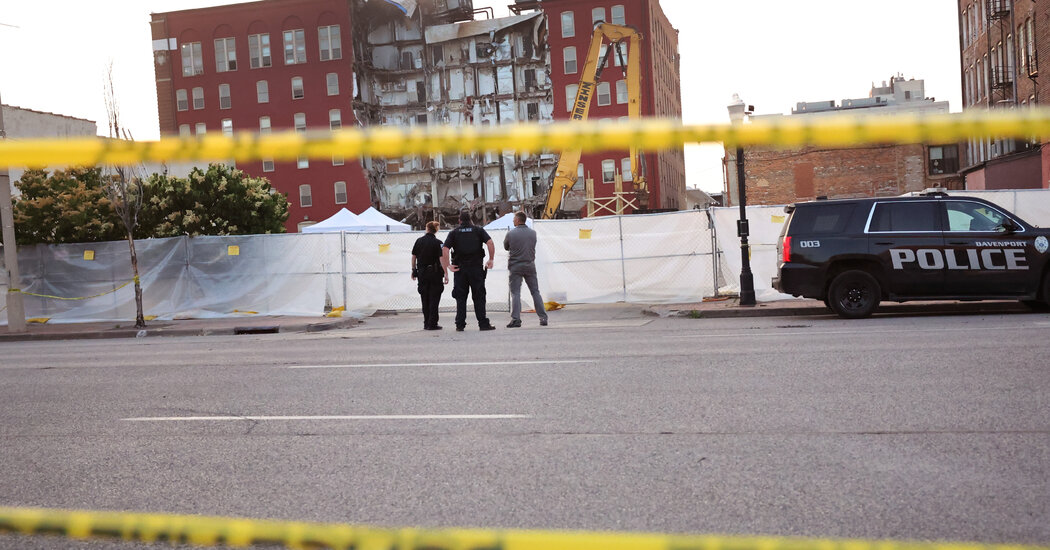Can Harris Really Build 3 Million New Housing Units?
Luke Muir and his wife moved to Phoenix from Louisiana two years ago for a better-paying job. They prepared for higher temperatures and low housing costs. The weather has lived up to their expectations; housing prices have not.
Pretty much since they arrived, Mr. Muir and his family have been trying and failing to find a single-family house for no more than $500,000. The options have been too small, too remote or too much of a fixer-upper.
“I’m like, ‘Wow, I thought this would be a more affordable place to live,’” said Mr. Muir, who is 44 and works in financial services. “It’s not like it’s San Diego or L.A. or some other place that is just known for astronomical prices.”
Across the country, rising prices and rents have become a crisis — eroding family budgets and leading to doubled-up households and multiplying homeless camps. The root of this pain is a decades-old housing shortage.
The remedy proposed by Vice President Kamala Harris is contained in a housing plan that, among other things, calls for the construction of three million new housing units over the next four years — a 50 percent increase over the current pace of building.
Vastly expanding the supply of housing is the only thing economists believe will make a meaningful difference in an affordability crunch. They disagree, however, about whether Ms. Harris’s plan would actually do that. (Economists also agree that former President Donald J. Trump’s housing plan, which aims to free up housing by deporting immigrants, would probably make the housing crisis worse by devastating the construction work force).
Reduced to its essence, Ms. Harris’s plan aims to flood the system with money for builders and buyers in the hope that it will jolt the construction market. It calls on Congress to expand a federal tax credit for subsidized rental housing while creating a new tax credit for developers to build starter homes, and another credit for families looking to rehabilitate their own worn-down housing stock. It also creates a $25,000 credit for first-time home buyers.
Mark Zandi, the chief economist of Moody’s Analytics, who has advised the Harris campaign, called it the most aggressive plan to increase the nation’s housing supply since modern suburbs were built after World War II. And if the numbers were to pencil out as neatly as they do in Ms. Harris’s 82-page economic plan, Mr. Zandi’s superlative would be accurate.
But that “if” creates pause.
Developers in Phoenix and elsewhere are naturally amenable to a federal plan that would reduce their taxes. Many developers said the idea of giving first-time home buyers money, which buyers would then give to them, sounded nice, too.
The question, as ever, is where and how they will build. This is why other economists, such as Ed Pinto at the market-oriented American Enterprise Institute, have said Ms. Harris’s plan would make shortages worse by inflating housing demand (because the home buyer credit would give families more to spend) without doing enough to increase supply.
Over the past half-century, Phoenix grew into one of America’s largest cities by building low-slung neighborhoods further and further outward. That playbook kept housing affordable for a long time, but no longer.
The average price of a home in Maricopa County, which surrounds Phoenix, is now $470,000, up about 50 percent since the pandemic. And that pattern of expansion is resulting in the same problems — congestion, smog, water shortages, sprawl — that many residents moved there from California to escape.
The Arizona Legislature recently passed several laws designed to speed construction and make neighborhoods denser — to build more housing per lot — but it will take more than a few years for that to translate into ramped-up building.
“We can turn 40 acres of cotton field into a subdivision in the blink of an eye,” said Jason Morris, a land use attorney at Withey Morris Baugh in Phoenix. “But that is much easier than trying to do 75 apartments in the middle of a neighborhood.”
Ms. Harris’s plan includes a $40 billion “Local Innovation Fund” that would, among other things, encourage cities to make building faster and easier by cutting the regulations that consume local zoning meetings. But for that to work, cities in Arizona and elsewhere have to want to change how they grow, which so far many are reluctant to do.
Even Mr. Muir, the frustrated home buyer, is leery of neighborhoods becoming too compact. Many of the new developments he sees when he is house-hunting are town-home projects or ones built so closely together that they might as well be apartments, he said.
“It’s baffling that people can reach out their window and touch the neighbor’s wall,” Mr. Muir said.
Would this housing, smaller and tighter, fulfill the American dream of people like Mr. Muir?
The solution to the country’s housing shortage will almost certainly require some sort of federal program — one that may be tough to get through Congress. But for a rush of money to work, cities and states also have to want it.
Ms. Harris’s main challenge will be convincing them to build. And then persuading Americans to be happy with it.


